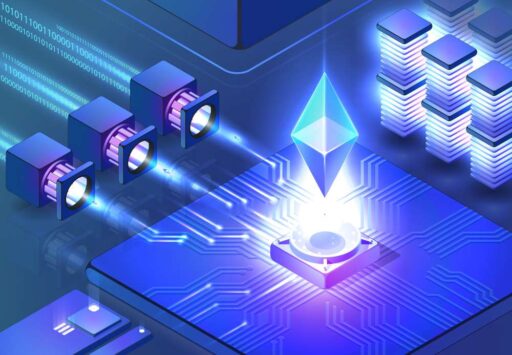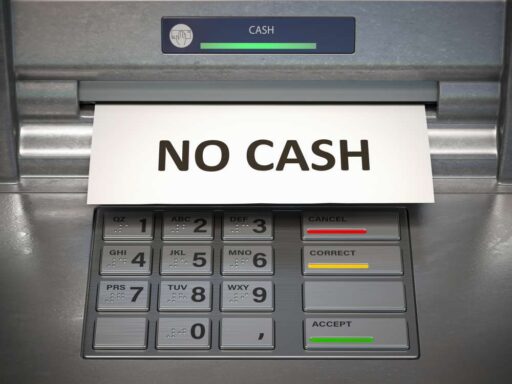

Rank: 2
In recent years, cryptocurrency has taken the financial world by storm, with Ethereum emerging as a standout player in the digital currency realm. Boasting a decentralized platform that allows for smart contracts and DApps to be built and deployed without the need for middlemen or centralized control, Ethereum offers a revolutionary approach to conducting transactions online. In this comprehensive article, we delve into the intricate workings of Ethereum, exploring its history, technology, advantages, and potential impact on industries worldwide. Join us as we unveil the dynamic world of Ethereum and shed light on how this groundbreaking blockchain technology is reshaping the way we do business in today’s increasingly digitized economy.
The Origins of Ethereum: A Brief History
- Inception: Ethereum was proposed by a programmer named Vitalik Buterin in late 2013, with the development funded through an online crowd sale held in mid-2014. Buterin aimed to create a platform that would enable anyone to build decentralized applications without relying on traditional servers.
- Launch and Growth: The Ethereum network officially went live on July 30, 2015, introducing the concept of smart contracts that could automatically execute agreements when certain conditions were met. This innovation attracted developers globally, leading to rapid expansion and widespread adoption within both the blockchain community and mainstream industries.
- Evolution: Over time, Ethereum has undergone several upgrades to enhance scalability and efficiency. The upcoming transition from proof-of-work to proof-of-stake consensus mechanism through Ethereum 2. 0 promises increased transaction speeds and reduced environmental impact, solidifying its position as a pioneering force in the world of blockchain technology.
Understanding Blockchain Technology and Smart Contracts
Blockchain technology is a decentralized ledger system that records transactions across multiple computers in a secure and transparent manner. Each block contains a set of transactions, linked to the previous block, creating an immutable chain. This distributed nature makes it resistant to tampering and fraud.
Smart contracts are self-executing contracts with the terms of the agreement directly written into code. They automatically enforce and execute these terms when predefined conditions are met. Ethereum, as a blockchain platform, allows for the creation of smart contracts using its own coding language called Solidity.
In summary, blockchain technology provides a secure way to record transactions while smart contracts enable automated execution of agreements based on predetermined criteria. Ethereum leverages both aspects to create a decentralized ecosystem for various applications beyond just financial transactions.
Exploring Decentralized Applications (DApps)
Decentralized applications, or DApps, are software programs that run on a decentralized network like Ethereum. These applications operate without a central authority, providing increased security and transparency. Users interact with DApps through blockchain technology, ensuring data integrity and immutability.
Key features of DApps include smart contracts, which are self-executing agreements stored on the blockchain. These contracts automatically execute when predefined conditions are met, eliminating the need for intermediaries. DApp developers use programming languages like Solidity to create these smart contracts and build innovative solutions across various industries.
In summary, exploring decentralized applications opens up new possibilities for trustless interactions by leveraging blockchain technology. With their transparent nature and autonomous functionality, DApps represent a shift towards a more secure and efficient way of developing software applications in the digital age.
Advantages of Using Ethereum for Transactions
- Decentralization: One major advantage of using Ethereum for transactions is its decentralized nature. There is no central authority controlling the network, which means that users have more control over their funds and data, reducing the risk of censorship or manipulation.
- Smart Contracts: Ethereum allows for the creation and execution of smart contracts, which are self-executing contracts with the terms directly written into code. This eliminates the need for intermediaries in many transactions, making processes more efficient and cost-effective.
- Global Reach: Since Ethereum operates on a global scale, it allows for faster cross-border transactions without relying on traditional banking systems. This can be especially beneficial for individuals or businesses involved in international trade or payments.
Challenges and Limitations Facing Ethereum
- Scalability issues: One major challenge facing Ethereum is its scalability problem. The network can become congested during high traffic periods, leading to slow transaction processing times and increased fees.
- Security concerns: Another limitation of Ethereum is the potential for security breaches. Smart contracts deployed on the platform are vulnerable to hacks, as seen in past incidents such as the DAO hack.
- Environmental impact: Ethereum’s current consensus mechanism, proof of work (PoW), requires significant computational power, leading to high energy consumption. This has raised concerns about the platform’s environmental impact and sustainability.
In conclusion, while Ethereum has revolutionized the world of decentralized applications and smart contracts, it still faces challenges that need to be addressed for its long-term viability and success. Developers are actively working on solutions like Ethereum 2. 0 to improve scalability and address other limitations, but these issues remain crucial factors shaping the future of the platform.
The Ethereum Virtual Machine (EVM) and Gas Fees
- The Ethereum Virtual Machine (EVM) is the underlying software that runs smart contracts on the Ethereum network.
- It acts as a decentralized computer, executing code and handling transactions across the blockchain.
- Every operation performed on the EVM requires computational resources, which are measured in gas.
Gas fees play a crucial role in the Ethereum ecosystem:
- Users pay gas fees to compensate miners for processing their transactions.
- These fees vary depending on network congestion and complexity of operations.
- Miners prioritize transactions with higher gas fees, incentivizing users to bid competitively for block space.
In summary, the EVM powers smart contracts on Ethereum by using gas as fuel for computations, while users navigate varying gas fees based on transaction demand and complexity.
Potential Impact of Ethereum on Industries Worldwide
- Finance: Ethereum’s smart contract capabilities have the potential to revolutionize the financial industry by enabling transparent, secure, and autonomous transactions without the need for intermediaries. This could streamline processes such as loan approvals, insurance claims processing, and cross-border payments.
- Supply Chain: By leveraging blockchain technology, Ethereum can increase transparency and traceability in supply chains. Smart contracts can automate key processes like inventory management, reducing inefficiencies and errors while enhancing trust among different stakeholders.
- Healthcare: Ethereum’s decentralized nature could improve data security and interoperability within healthcare systems. Through blockchain-based solutions, patients’ health records can be securely stored and shared among providers with their consent, ensuring better care coordination.
The Future of Ethereum: Innovations and Developments
- Ethereum 2. 0: The upcoming upgrade to Ethereum, known as Ethereum 2. 0 or ETH 2. 0, aims to address scalability issues and improve network security through a transition from proof-of-work to proof-of-stake consensus mechanism.
- Layer 2 Solutions: Layer 2 solutions like Optimistic Rollups and zkRollups are being developed to increase the transaction throughput of the Ethereum network while reducing fees and improving overall efficiency.
- DeFi Expansion: Decentralized finance (DeFi) projects built on Ethereum continue to grow rapidly, offering innovative financial products and services that could potentially disrupt traditional banking systems in the future.









